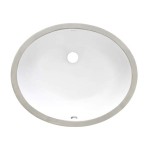Here's an article focusing on the "20 x 31 Kitchen Sink," formatted according to your specifications.
Understanding the 20 x 31 Kitchen Sink: Dimensions, Materials, and Installation
The 20 x 31 kitchen sink represents a specific size category within the vast array of sink options available to homeowners and contractors. These dimensions, indicating a width of 20 inches and a length of 31 inches, often dictate the sink's suitability for particular kitchen layouts and countertop configurations. This article provides a comprehensive overview of the 20 x 31 kitchen sink, exploring its potential applications, material choices, common mounting styles, and key considerations during the installation process. Understanding these aspects is crucial for making informed decisions when selecting or replacing a kitchen sink.
The specific size dimensions of a 20 x 31 sink often position it as a versatile option, capable of fitting into moderately sized kitchen islands or standard-depth countertops. It provides a balance between basin capacity and the amount of countertop space it occupies. This size is neither excessively large nor restrictively small, making it favorable for many kitchens seeking a balance between functionality and space efficiency.
Assessing the Suitability of a 20 x 31 Sink for Your Kitchen
The first step in determining if a 20 x 31 kitchen sink is appropriate for a specific kitchen involves carefully measuring the available space. Countertop depth and width are crucial factors. A standard countertop depth is typically around 25 inches. The 31-inch length of the sink should be accommodated within the countertop's dimensions without creating an overhang or requiring significant countertop modification. The 20-inch width must also be considered in relation to any adjacent appliances or fixtures, such as dishwashers or cabinets. Clearance around the sink area is essential for comfortable workflow.
Beyond countertop size, the sink's intended function should be evaluated. Consider the volume of dishes typically washed, the size of cookware that needs to be accommodated, and whether features like a separate washing and rinsing basin are desired. While a 20 x 31 sink offers a reasonable basin size for many households, it may not be sufficient for those who frequently prepare elaborate meals or require extra space for large pots and pans. In such cases, exploring larger sink options may be necessary.
Finally, the existing plumbing configuration must be taken into account. Relocating plumbing can add significantly to the cost and complexity of a sink installation. Ensuring that the drain and water supply lines are compatible with the new sink's location will streamline the installation process. If the existing plumbing requires modification, it is advisable to consult with a qualified plumber to assess the feasibility and cost implications.
Material Options and Their Characteristics
A wide range of materials is available for 20 x 31 kitchen sinks, each offering distinct advantages and disadvantages in terms of durability, aesthetics, and cost. Stainless steel is a popular choice due to its corrosion resistance, durability, and relatively low cost. Stainless steel sinks are available in various gauges, with lower gauges indicating thicker, more durable steel. However, stainless steel can be prone to scratching and water spots. The gauge number indicates the steel's thickness. The lower the number, the thicker and more durable the steel, with 16 gauge being thicker than 18 gauge.
Granite composite sinks are constructed from a blend of granite stone dust and acrylic resins. This material provides excellent durability, heat resistance, and scratch resistance. Granite composite sinks are also available in a wide array of colors and styles. The synthetic composition enables it to be resistant to stain and scratch. Its finish provides an elegant look that some homeowners prefer.
Fireclay sinks are crafted from clay fired at extremely high temperatures, resulting in a dense, non-porous material that is highly resistant to chipping, staining, and scratching. Fireclay sinks offer a classic, timeless aesthetic but can be more expensive than other options and prone to cracks during heavy use.
Cast iron sinks, coated with a porcelain enamel finish, are known for their durability and heat retention. However, they can be heavy and susceptible to chipping if not properly cared for. They provide a vintage look and have good sound-dampening properties to minimize noise during use, but are heavy and require strong support structures.
Copper sinks possess natural antimicrobial properties and develop a unique patina over time. They are generally more expensive and require specific cleaning products to maintain their appearance. Their color is very distinct, often sought after by homeowners who want a rustic style.
Installation Methods and Considerations
Several installation methods are commonly used for 20 x 31 kitchen sinks, each with its own set of requirements and challenges. The most prevalent options include undermount, top-mount (drop-in), and farmhouse (apron-front) sinks. The appropriate installation method depends on the sink material, countertop material, and the desired aesthetic.
Undermount sinks are installed beneath the countertop, creating a seamless transition between the sink and the countertop surface. This installation method provides a clean, modern look and simplifies countertop cleaning. However, undermount sinks require solid-surface countertops like granite, quartz, or solid acrylic, as laminate countertops are not strong enough to support the weight of the sink. The edge of the countertop is exposed, requiring professional polishing and sealing to protect it from water damage.
Top-mount sinks, also known as drop-in sinks, are installed by dropping the sink into a pre-cut hole in the countertop. The sink's rim rests on the countertop surface, providing support. Top-mount sinks are relatively easy to install and can be used with a wider range of countertop materials, including laminate. However, the visible rim can trap dirt and debris, requiring frequent cleaning.
Farmhouse sinks feature an exposed front apron that extends beyond the countertop edge. These sinks offer a distinctive, traditional aesthetic and usually require specialized cabinetry to accommodate their size and weight. Installing a farmhouse sink often involves modifying or replacing existing base cabinets. They often have a larger basin volume than other sink types.
Regardless of the installation method chosen, it is important to ensure that the sink is properly sealed to prevent water leaks. Plumber's putty or silicone caulk is commonly used to seal the sink's rim to the countertop. All plumbing connections must be carefully tightened to prevent leaks. Consider hiring a professional even for what seems like a simple installation. Improper installation can often cause significant damage to the countertop and surrounding cabinets.
The proper drain assembly should be installed. This includes the strainer basket, tailpiece, and P-trap. These parts are responsible for draining the water and preventing sewer gases from entering the home. The P-trap is a curved section of pipe that traps water, creating a seal that prevents gases from escaping.

Vida Axes 31 X 20 Stainless Steel Single Hole Overmount Kitchen Sink Tubs The Ultimate Bath

American Standard Undermount 31 In X 20 Stainless Steel Double Equal Bowl Kitchen Sink 18cr 9312000t 075 At Com

Nero Double Bowl Kitchen Sink 31 In X 20 Tassili

Allen Roth 31 In X 20 Stainless Steel Single Bowl Drop Undermount 1 Hole Residential Kitchen Sink Fsd2z3120a1 Rona

Pacific Plumbing Supply Reliant 31 X 20 Inch Stainless Steel Undermount Double Bowl Kitchen Sink

Elkay Lustertone Ss 31 2 X 20 7 5 Offset 40 60 Double Under Mt Sink Kit

Kitchen Sink 31 1 4 X 20 9 Bosco Builder Series 208014 Vatero Bath

Erica 31 X 20 Single Bowl Granite Kitchen Sink

31 3 8 X 20 1 2 Offset Undermount Single Bowl Kitchen Sink 346

Elkay Lustertone Ss 31 2 X 20 5 9 8 Offset Double Undermount Sink







